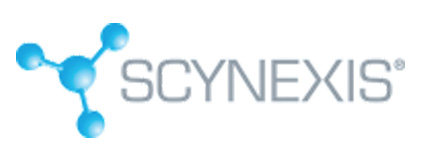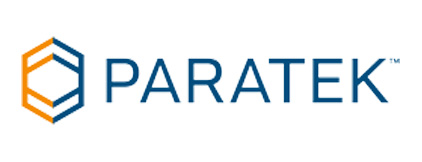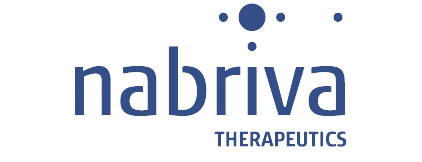Nabriva, along with its collaborators, will present a total of 14 posters, including 11 for lefamulin and three for fosfomycin. Lefamulin data being presented has been generated from the company’s community-acquired bacterial pneumonia (CABP) clinical trial and in vitro surveillance programs. In addition, the company will present clinical data for CONTEPO from the Phase 2/3 pivotal study for the treatment of complicated urinary tract infections (cUTIs) as well as epidemiologic and prevalence data of U.S. hospitalized patients with difficult-to-treat, drug-resistant uropathogens, e.g., Enterobacteriaciae and P. aeruginosa.
XENLETA is the first oral and intravenous (IV) treatment in the pleuromutilin class of antibiotics. XENLETA was approved by the
“We are excited to share our latest clinical data on the safety and efficacy of XENLETA and CONTEPO with the infectious disease community at IDWeek,” said
PRESENTATIONS SCHEDULED FOR
Presentation Title: Efficacy and Safety of Lefamulin (LEF) Versus Moxifloxacin (MOX) for Legionella pneumophila (LP) in Patients (Pts) With Community-Acquired Bacterial Pneumonia (CABP): Pooled Results From the Lefamulin Evaluation Against Pneumonia (LEAP) 1 and LEAP 2 Phase 3 Clinical Trials
Poster #: 663
Presenter: E. Alexander
Presentation Title: Efficacy in Adults With Moderate to Severe Community-Acquired Bacterial Pneumonia (CABP) and Pneumonia Outcomes Research Team (PORT) Risk Class III to V: Results of a Pooled Analysis of Lefamulin Evaluation Against Pneumonia (LEAP) 1 and LEAP 2 Study Outcomes
Poster #: 664
Presenter: E. Alexander
Presentation Title: Health-Related Quality of Life (HRQoL) as Measured by the 12-Item Medical Outcomes Study Short-Form (SF-12) Among Adults With Community-Acquired Bacterial Pneumonia (CABP) Who Received Either Lefamulin (LEF) or Moxifloxacin (MOX) in Two Phase 3 Randomized, Double-Blind, Double-Dummy Clinical Trials (LEAP 1 and 2)
Poster #: 676
Presenter: T. Lodise
Presentation Title: Cardiac Safety in Adults With Community-Acquired Bacterial Pneumonia (CABP) Treated With Lefamulin (LEF) or Moxifloxacin (MOX): Analysis of Lefamulin Evaluation Against Pneumonia (LEAP) 1 and LEAP 2 Study Results
Poster #: 684
Presenter: D. Stein
Presentation Title: Hepatobiliary Safety in Adults With Community-Acquired Bacterial Pneumonia (CABP) Treated With Lefamulin (LEF) or Moxifloxacin (MOX): Pooled Analysis of Lefamulin Evaluation Against Pneumonia (LEAP) 1 and LEAP 2 Study Results
Poster #: 699
Presenter: J. Schranz
Presentation Title: In Vitro Activity of Lefamulin Against Bacterial Pathogens Causing Community-Acquired Bacterial Pneumonia (CABP): SENTRY Surveillance 2017–2018 Results From the United States (US)
Poster #: 703
Presenter:
Presentation Title: Pharmacokinetics (PK) and Safety of
Poster #: 705
Presenter: D. Mariano
Presentation Title: Lefamulin (LEF) Versus Moxifloxacin (MOX) in Patients With Community-Acquired Bacterial Pneumonia (CABP) at Risk for Poor Efficacy or Safety Outcomes: Pooled Subgroup Analyses From the Lefamulin Evaluation Against Pneumonia (LEAP) 1 and LEAP 2 Phase 3 Noninferiority Clinical Trials
Poster #: 717
Presenter: J. Schranz
Presentation Title: Pharmacokinetics (PK) and Safety of
Poster #: 722
Presenter:
Presentation Title: Efficacy of Fosfomycin for Injection (FOS) vs Piperacillin-Tazobactam (PIP-TAZ) in Adults With Complicated Urinary Tract Infection (cUTI) and Acute Pyelonephritis (AP): ZEUS Study Outcomes in Patients With Reduced Study Drug Susceptibility
Poster #: 720
Presenter:
PRESENTATIONS SCHEDULED FOR
Presentation Title: Prevalence and Regional Variation of in ESBLs and CRE Enterobacteriaceae (ENT) among Adult, Hospitalized Patients with ENT on a Urine Culture: A Multicenter Evaluation
Poster #: 1440
Presenter: V. Gupta
Presentation Title: Trends in Important Resistant Gram-negative (GN) and Gram-positive (GP) Urine Bacterial Pathogens in Hospitalized Patients in the US: A Multicenter Evaluation from 2013-2018
Poster #: 1485
Presenter: V. Gupta
PRESENTATIONS SCHEDULED FOR
Presentation Title: Efficacy and Symptom Resolution by Visit in Adults With Community-Acquired Bacterial Pneumonia (CABP) Treated With Lefamulin (LEF) or Moxifloxacin (MOX): Pooled Analysis of Lefamulin Evaluation Against Pneumonia (LEAP) 1 and LEAP 2 Study Results
Poster #: 2233
Presenter: E. Alexander
Presentation Title: Oral 5-Day Lefamulin for Outpatient Management of Pneumonia Outcomes Research Team (PORT) Risk Class III/IV Community-Acquired Bacterial Pneumonia (CABP): Post Hoc Analysis of the Lefamulin Evaluation Against Pneumonia (LEAP) 2 Phase 3 Study
Poster #: 2245
Presenter: D. Mariano
About
About CONTEPO
CONTEPO (fosfomycin) for injection, (previously referred to as ZTI-01 and ZOLYD) is a novel, potentially first-in-class in
About XENLETA
XENLETA (lefamulin) is a first-in-class semi-synthetic pleuromutilin antibiotic for systemic administration in humans discovered and developed by the
INDICATION AND IMPORTANT SAFETY INFORMATION
INDICATION
XENLETA is a pleuromutilin antibacterial indicated for the treatment of adults with community-acquired bacterial pneumonia (CABP) caused by the following susceptible microorganisms: Streptococcus pneumoniae, Staphylococcus aureus (methicillin-susceptible isolates), Haemophilus influenzae, Legionella pneumophila, Mycoplasma pneumoniae, and Chlamydophila pneumoniae.
USAGE
To reduce the development of drug-resistant bacteria and maintain the effectiveness of XENLETA and other antibacterial drugs, XENLETA should be used only to treat or prevent infections that are proven or strongly suspected to be caused by susceptible bacteria.
IMPORTANT SAFETY INFORMATION
CONTRAINDICATIONS
XENLETA is contraindicated in patients with known hypersensitivity to XENLETA or pleuromutilins.
XENLETA tablets are contraindicated for use with CYP3A4 substrates that prolong the QT interval.
WARNINGS AND PRECAUTIONS
XENLETA has the potential to prolong the QT interval. Avoid XENLETA in patients with known QT prolongation, ventricular arrhythmias, and patients receiving drugs that may prolong the QT interval.
Based on animal studies, XENLETA may cause fetal harm. Advise females of reproductive potential of the potential risk to the fetus and to use effective contraception.
Clostridium difficile-associated diarrhea (CDAD) has been reported with nearly all systemic antibacterial agents, including XENLETA, with severity ranging from mild diarrhea to fatal colitis. Evaluate if diarrhea occurs.
ADVERSE REACTIONS
The most common adverse reactions (≥2%) for (a) XENLETA Injection are administration site reactions, hepatic enzyme elevation, nausea, hypokalemia, insomnia, and headache and (b) XENLETA Tablets are diarrhea, nausea, vomiting, and hepatic enzyme elevation.
USE IN SPECIFIC POPULATIONS
In patients with severe hepatic impairment, reduce the dosage of XENLETA Injection to 150 mg infused over 60 minutes every 24 hours. XENLETA Tablets are not recommended in patients with moderate or severe hepatic impairment due to insufficient information to provide dosing recommendations.
Avoid XENLETA Injection and Tablets with concomitant strong or moderate CYP3A or P-gp inducers. Monitor for reduced efficacy of XENLETA.
Avoid XENLETA Tablets with strong CYP3A or P-gp inhibitors.
Monitor for adverse reactions of sensitive CYP3A substrates administered with XENLETA Tablets.
XENLETA has not been studied in pregnant women. Verify pregnancy status in females prior to initiating XENLETA and advise females to use contraception during treatment and for 2 days after the final dose. Lactating women should pump and discard milk for the duration of treatment with XENLETA and for 2 days after the final dose.
To report SUSPECTED ADVERSE REACTIONS, or administration during pregnancy, contact
Please see Full Prescribing Information for XENLETA.
Forward-Looking Statements
Any statements in this press release about future expectations, plans and prospects for
CONTACTS:
For Investors
ir@nabriva.com
For Media
mikebeyer@sambrown.com
312-961-2502
Source: Nabriva Therapeutics US, Inc


 Vu L. Truong, Ph.D.
Vu L. Truong, Ph.D. René Russo, PharmD, BCPS
René Russo, PharmD, BCPS Roger J. Pomerantz, M.D., F.A.C.P.
Roger J. Pomerantz, M.D., F.A.C.P. Christine Ann Miller
Christine Ann Miller Graham G. Lumsden
Graham G. Lumsden Marco Taglietti, M.D.
Marco Taglietti, M.D. Ankit Mahadevia
Ankit Mahadevia John McDonough
John McDonough Frank Pasqualone
Frank Pasqualone Ed Garvey
Ed Garvey Vijay B. Samant
Vijay B. Samant Jeffrey Stein, Ph.D.
Jeffrey Stein, Ph.D. Evan Loh, M.D.
Evan Loh, M.D. Michael Dunne, M.D
Michael Dunne, M.D Ciara Kennedy, Ph.D.
Ciara Kennedy, Ph.D. Ted Schroeder
Ted Schroeder Kevin Finney
Kevin Finney









 Stephen Conafay
Stephen Conafay Christopher J. Burns, Ph.D.
Christopher J. Burns, Ph.D.

 Corey Fishman
Corey Fishman